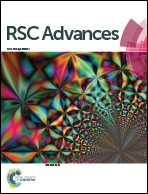Large and porous carbon sheets derived from water hyacinth for high-performance supercapacitors
Abstract
To elevate the properties of carbon based electrical double-layer capacitors (EDLCs), sheet-like carbon with high porosity is desirable due to enhanced electron transport efficiency and good electrolyte accessibility. In this paper, large porous carbon sheets are fabricated via an acid treatment, pyrolytic carbonization, and alkali activation of water hyacinth (WH) biomass. The WH-derived carbon sheets with a large uniform area have a large specific surface of 1308 m2 g−1 and desirable pore volume of 0.84 cm3 g−1, resulting from the template of the original thin cell walls and large intercellular space, which deliver a high specific capacitance of 273 F g−1 at a current density of 1 A g−1, excellent capacity retention of 75% when the current density is increased from 1 to 50 A g−1, and superior cyclic stability over 10 000 cycles in 6 M KOH. The specific capacitance of the assembled symmetric capacitor based on the large and porous carbon sheets reaches a remarkable 81.5 F g−1 and an energy density of 7.24 W h kg−1 can be achieved at a current density of 1 A g−1. These outstanding electrochemical properties suggest that the WH-derived porous carbon sheets have commercial potential in high-performance supercapacitors and the simple and economical process utilizing the WH waste biomass is environmentally friendly.


 Please wait while we load your content...
Please wait while we load your content...